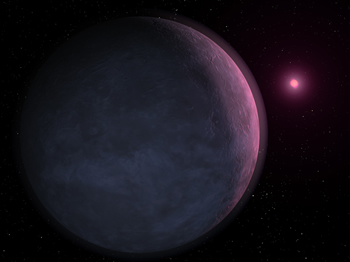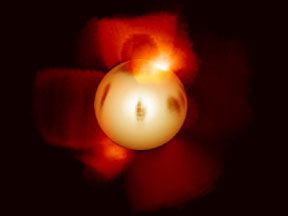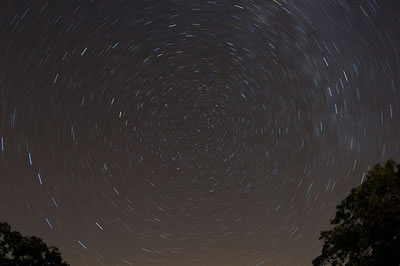Artist's concept of a rocky planet in orbit around a distant star.
Click on image for full size
NASA, ESA and G. Bacon (STScI)
Planets around other Stars
Did you know that about 200 planets have been discovered around distant stars? The first planet found to be orbiting a star like our Sun was announced in 1995. Since then astronomers have continued to find new planets outside of
our solar system, at a rate of more than one new planet every month!
The star and its planet orbit around each other. The planet moves in a wide orbit, while the star just appears to wobble slightly. By measuring the Doppler shift of the light coming from the star, scientists can detect the tiny motion caused by the planet. Most of the distant planets were discovered this way.
If we are lucky, some of the planets can pass in front of their star. This blocks out some of the light that we usually see from the star, briefly making it dimmer. It's like a solar eclipse, but the planet only covers a small part of the star. Only a few planets outside our solar system pass in front of their stars.
All of the distant planets are too far away to see directly. We can only see their effect on the star that they orbit.
You might also be interested in:

An eclipse of the Sun occurs when the Earth passes through the Moon's shadow. A total eclipse of the Sun takes place only during a new moon, when the Moon is directly between the Sun and the Earth. When
...more
For a long time, scientists have wondered if there are other systems of planets like our own in our galaxy. Recently a team of astronomers discovered a solar system almost 5,000 light years away that has
...more
If there are other planets in the Universe that are like Earth, then they might be places where life could survive. However, the search for planets like Earth is not easy. Most of the planets found outside
...more
You may have heard of sunspots that sometimes dot the "surface" of the nearest star, our Sun. Well, other stars have spots too. They are called starspots and are relatively cool, dark regions on the visible
...more
Astronomers use a special term to talk about the brightness of stars. The term is "magnitude". The magnitude scale was invented by the ancient Greeks around 150 B.C. The Greeks put the stars they could
...more
Because of the rotation of the Earth and its orbit around the Sun, we divide the stars and constellations into two groups. Some stars and constellations never rise nor set, and they are called circumpolar.
...more
In the 1960's, the United States launched some satellites to look for very high energy light, called Gamma Rays. Gamma Rays are produced whenever a nuclear bomb explodes. The satellites found many bursts
...more















